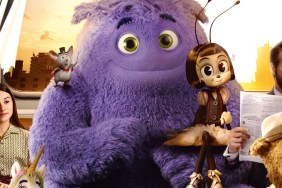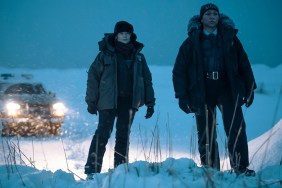
Welcome to the first “meeting” of the RopeofSilicon Movie Club. The film being discussed is Peter Weir’s eerie 1979 feature Picnic at Hanging Rock, a film easily described as a mystery and often referred to as a horror. I had hoped to keep my own thoughts to a reasonable length, but the film got the better of me.
Feel free to read my thoughts or simply delve into the conversation in the comments below. This is a free for all discussion were thoughts and opinions are allowed to run free… Please do so…
Picnic at Hanging Rock is an adaptation of Joan Lindsay‘s 1967 novel of the same name and is easily summarized, but not explained, by the film’s opening text:
On Saturday 14th February 1900 a party of schoolgirls from Appleyard College picnicked at Hanging Rock near Mt. Macedon in the state of Victoria. During the afternoon several members of the party disappeared without a trace…
The mystery, as it were, begins immediately, and not with the disappearance of the girls, but with the day and date. February 14, 1900 was not a Saturday, but a Wednesday, and whether or not it’s important is up to you to decide. Lindsay in introducing the novel wrote:
Whether “Picnic at Hanging Rock” is fact or fiction, my readers must decide for themselves. As the fateful picnic took place in the year 1900, and all the characters who appear in this book are long since dead, it hardly seems important.
Putting the book down for a second and looking at it as a film only, two movies come immediately to mind — Michael Powell and Emeric Pressburger’s Black Narcissus (1947) and Stanley Kubrick’s 2001: A Space Odyssey (1968).
My comparison with Black Narcissus has most to do with the tone of the film. Centered on the refined, prim and proper schoolgirls at Appleyard College, the last thing you would expect following the opening scenes of girls preparing for the day with song, poetry and corsets is a film of this nature.
As for 2001, I see the monolith of Kubrick’s sci-fi achievement and the volcanic Hanging Rock as almost one and the same. Both are accompanied by a haunting score that only strengthens the more time spent looking at them. And both clearly have a profound effect on the narratives themselves and the characters that come in contact with them, not to mention the metaphysical comparisons.
Both 2001 and Hanging Rock, I believe, have supernatural, scientific and/or religious themes throughout. With Hanging Rock specifically, one way I see of looking at Hanging Rock itself, is as a representation of the forbidden tree in the Garden of Eden. Headmistress Mrs. Appleyard (Rachel Roberts) warns the girls to stay away, citing poisonous snakes and other dangers. The forbidden tree, however, is also known as the tree of knowledge. To look at the film in a Christian context, I wonder, Did the girls find knowledge or were they punished for their disobedience?
Considering I see Mrs. Appleyard as hardly a physical representation of God, it takes away from this interpretation while also making it hard to believe the girls would be punished for their curiosity as were Adam and Eve. To that end, however, what was it that happened to them?
When looking for additional themes to explore, I’m curious what meaning some of you may find in Felicia Hemans’s “Casabianca” which is referenced repeatedly. Shakespeare’s Sonnet 18 is overheard at the base of the rock, which I read as some sort of implication of immortality.

I was also fascinated by this scene in the film and the idea of the girls — Miranda (Anne-Louise Lambert) being referred to as a Botticelli Angel — and their ascension up the rock, out of Purgatory, toward Paradise. To interpret it in this way is to suggest layers of status and consciousness, something I think this film delves in deeply.
The film opens and almost immediately we hear a quote from Edgar Allen Poe’s “A Dream Within a Dream“:
What we see and what we seem are but a dream, a dream within a dream.
What’s interesting about this is that it gives us a hint at just exactly what may have happened to the girls as well as introduces many of us to something we may have never heard of, which is the story’s relation to Australian Aborigine Dreamtime (or “Dreaming”). I had never heard of this, but to search for answers I offer this from the linked article:
Dreamtime refers to an experience and to beliefs that are largely peculiar to the Australian native people. There are at least four aspects to Dreamtime – The beginning of all things; the life and influence of the ancestors; the way of life and death; and sources of power in life.
The aborigine people believed that each person had a part of their nature that was eternal. This eternal being pre-existed the life of the individual, and only became a living person through being born to a mother. The person then lived a life in time, and at death melted back into the eternal life.

This idea is perpetuated in the scene where the girls all fall in a circle during their climb and we see beetles on Miranda and a lizard near Marion (Jane Vallis). The appearance of these is not coincidence as they are to be interpreted as each girl’s totem, a symbol that connects them to their ancestors throughout time and is significant in Australian culture. Note the absence of a totem for both Edith (Christine Schuler) and Irma (Karen Robson).
Many speculate this is what happened to both Marion and Miranda as well as Miss McCraw. I don’t know about you, but all this talk of dreaming, totems and dreams within dreams, not to mention the image above, of which I said made me think of Purgatory (and by relation, limbo), I can only think of one film that may have taken all of this (even Kubrick’s 2001) and put it together in a way that brought in millions.

Yes, as cliche and tired as it has become to compare it to other films, Christopher Nolan’s Inception bears a striking resemblance — the “Dreamtime” suggestion of multiple states of consciousness and the idea of totems that connect us through time as a physical representation of reality that is not ourselves, but in a way linked.
In case you weren’t aware, Lindsay’s novel was originally published without the Eighteenth Chapter (read it here), which was later published at her request following her death. Inside it, we read the girls’ corsets hung in the air after being flung off the ledge. Again, the visual panache of Nolan’s Inception comes to mind, perhaps something that informed the film’s visual style.
Strangely, Inception almost helps explain the first mystery of the film and the idea of time. The deeper you go into a dream in Inception the slower time goes, where years in dreamtime could represent mere seconds in reality.
The idea of time is heavily at play in Picnic at Hanging Rock as clocks stop at the Rock. Miranda has even gone so far as to remove the timepiece she carried around her neck, unable to stand the ticking of the clock above her heart, as if to no longer wanting to be reminded of the passing of time. Think on it, how long were they on the rock? How long did they say they’d be up there?
With that, I feel I should be quiet and open the floor to you. I do so without even touching upon Sara’s (Margaret Nelson) character or the two boys Michael Fitzhubert (Dominic Guard) and Albert Crundall (John Jarratt).
SOME STARTER QUESTIONS
What were your initial impressions of the film before digging into its mystery? Were you compelled by the mystery or frustrated by the seeming lack of information?
Does the fact it’s largely an Australian film, which necessitates some understanding of Australian history change your opinion of the film for better or worse?
I wonder, what do you make of Sara’s character? Why do you believe her story is being told?
The two boys are clearly from different stations in life, what do these differences mean?
Have you read the book? Did you read it before or after seeing the movie? What effect did that have on your viewing of the film?
And, of course, how do you interpret the disappearance of the girls?
DISCUSSION RULES
- No topic is off limits as long as it pertains to the film discussed or comes as a natural progression of the conversation.
- Keep your comments to a reasonable length. I know the urge to write a lot at once is there, but try to rein it in and get out one thought at a time. That way the conversation will move more fluidly and make sure none of your thoughts are overlooked.
- NO BULLYING: This is important, while you are free to disagree, do so in a mature manner. Hopefully I won’t have to explain that any further.
VOTE FOR THE NOVEMBER 12, 2012 SELECTION
Use the following poll to vote for the November 12, 2012 Movie Club selection and to suggest films for future entries direct all your emails to [email protected].
Next week’s film will be Ang Lee’s The Ice Storm. For more information and an updated schedule, visit the Movie Club homepage.









